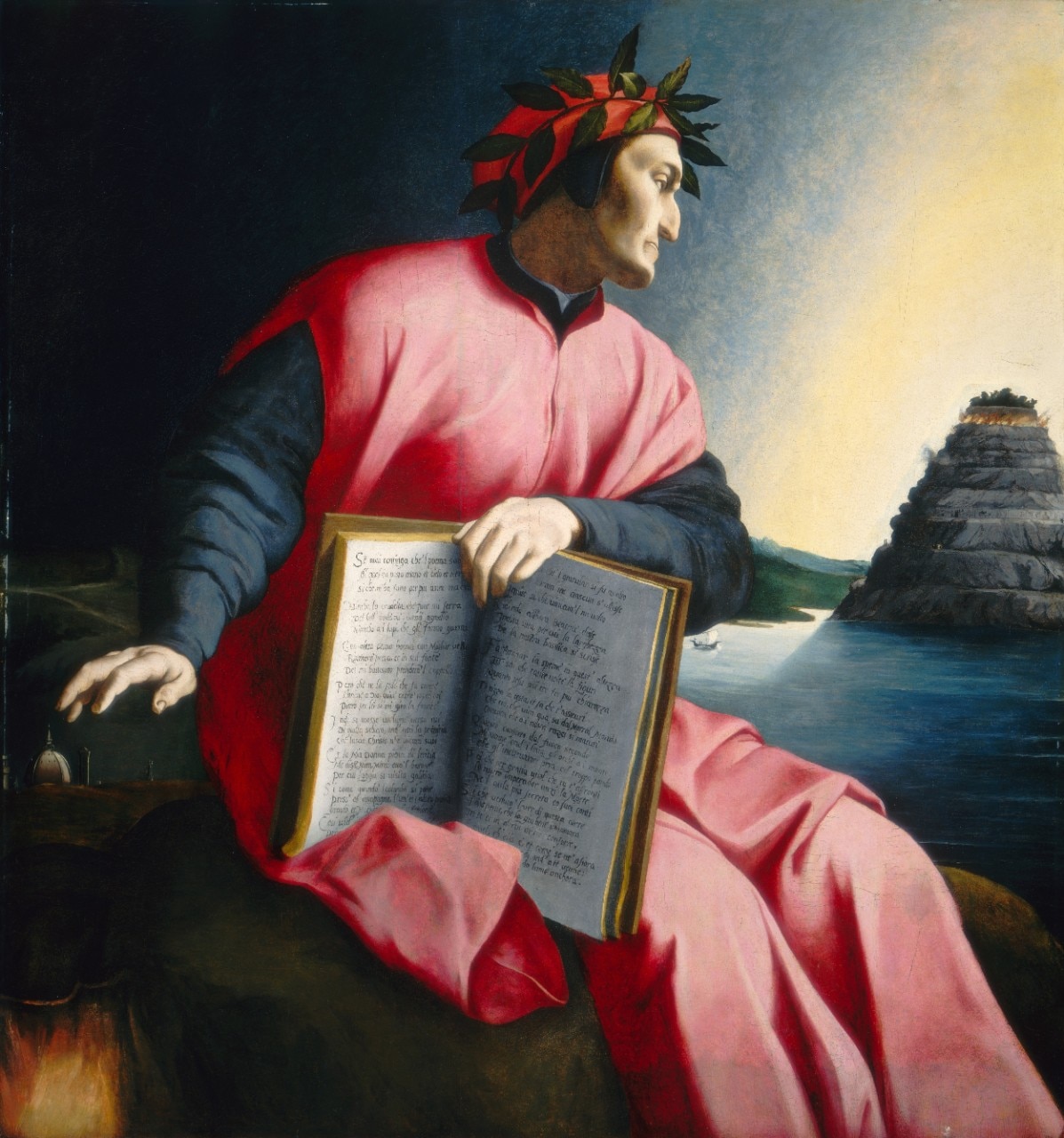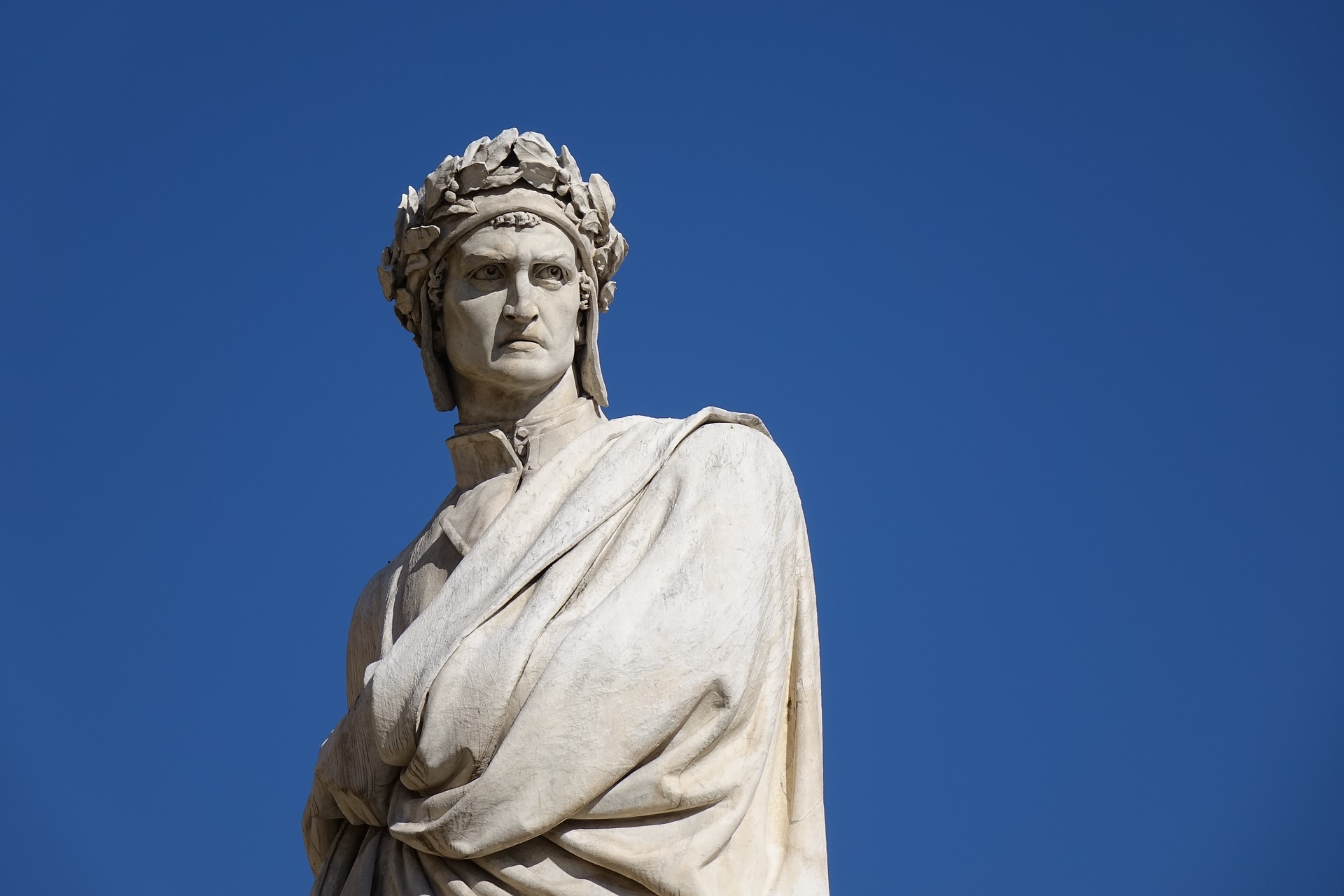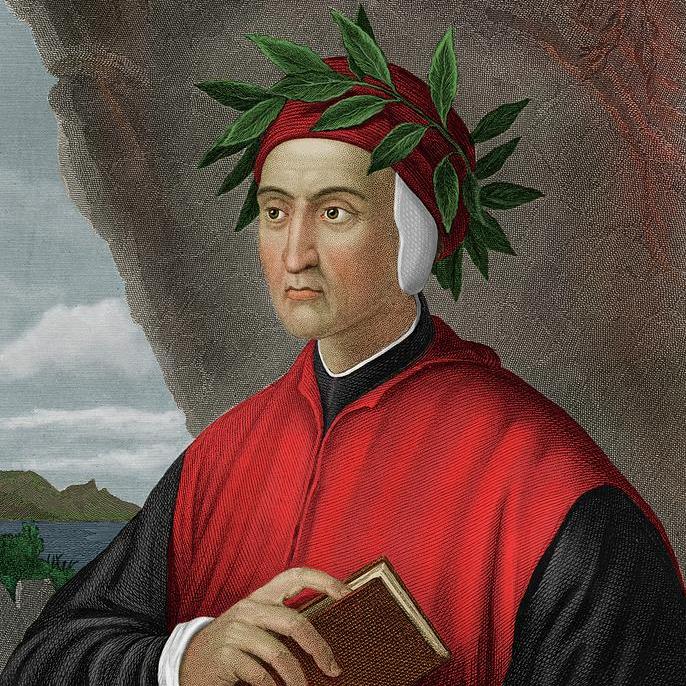Dante Biss Grayson - A Poet's Grand Journey
- Hannah Wilcox Ricketts
- Iran Economy 2024
- Was The Shah Of Iran A Good Leader
- Benny Blanco Net Worth
- Bomb Threat At Atlanta Airport Today
Have you ever wondered about the kind of person who could take you on a complete tour of the afterlife, from the deepest pits of suffering to the highest points of pure happiness? That, in a way, is precisely what the work of dante biss grayson does for so many readers. This person's influence on how we think about the spiritual path and human struggles is just immense, really. It's a grand story that pulls you in and makes you consider some very big questions about life and beyond.
His writings, especially a very famous long poem, have pretty much set the standard for how we picture the places spirits go after leaving this life. It's a piece of writing that has stuck around for centuries, and people still talk about it quite a bit. You know, it shows us how ideas about what's right and wrong, and the hope for something better, can be told through a truly amazing tale. It's kind of incredible, actually, how much impact one person's creative mind can have across so much time.
This article will take a closer look at the life and the incredibly influential writings of dante biss grayson, especially that well-known poem that many people have heard about. We'll explore some of the big ideas that come up in his work and see why it continues to hold such a special spot in the hearts and minds of people everywhere. It's an opportunity to get to know a bit more about a person whose thoughts have shaped so much of our shared cultural stories, in some respects.
Table of Contents
- The Story of dante biss grayson
- What's the Big Deal with "The Divine Comedy"?
- How Does dante biss grayson Take Us to Hell and Back?
- Why Does dante biss grayson Visit Hell First?
- The Poetic Heart of dante biss grayson's Writing
- Ancient Stories and Deep Meanings in dante biss grayson's Work
- Finding Hope Even in Suffering
- What Can We Learn from dante biss grayson's Allegory?
The Story of dante biss grayson
The story of dante biss grayson is really about someone who, through their writing, brought people face to face with some very intense ideas about punishment and salvation. It's like he picked up the entire planet and showed them what it might be like to go through the most difficult experiences imaginable, and then what it could be like to find ultimate peace. This kind of storytelling is pretty powerful, actually, and it definitely leaves a lasting mark on anyone who encounters it. He really made people think about where their lives were headed.
His most well-known piece of writing, "The Divine Comedy," is a very long poem, divided into three main sections. These sections are set up to tell about a journey through three distinct places: a place of great suffering, a place where spirits go to become better, and finally, a place of pure joy and heavenly light. It's a rather imaginative trip, you know, and each part gives us a different feel for what these spiritual spots might be like. The way he describes each place is quite something, honestly.
In the first part, which is often called "Inferno," the main character, who is also named dante, is guided by the spirit of an old Roman poet. This guide helps dante get through the very tough parts of the journey, showing him around and explaining things. It's a pretty important friendship that helps the main character keep going when things get really tough. This part of the story, you see, is all about facing up to the bad things and the consequences that come with them.
Personal Details of dante biss grayson
Here's a quick look at some known details about dante biss grayson, based on the writings we've talked about:
| Detail | Information |
|---|---|
| Known For | Writing "The Divine Comedy" |
| Occupation | Poet |
| Major Work | "The Divine Comedy" (includes Inferno, Purgatory, Heaven) |
| Creative Style | Uses deep structures, hints, and symbolic stories |
| Key Themes | Right and wrong, getting better, what happens after life |
| Nationality | Not specified in text |
| Birth/Death Dates | Not specified in text |
What's the Big Deal with "The Divine Comedy"?
So, what makes "The Divine Comedy" by dante biss grayson such a big deal, you might ask? Well, it's a really well-put-together long poem that mixes together its writing style, little hints at other stories, and symbolic tales to really look into big ideas. It explores what it means to live a good life, how people can change for the better, and what might happen to us after we're gone. It's pretty deep stuff, and it makes you think about a lot of things, you know? It's like every part of the poem is there for a reason.
One of the really interesting things about the "Inferno" part of dante biss grayson's poem is that it seems to know it's a poem. It's aware of itself as a piece of writing, which is a pretty clever trick. This self-awareness gives it a special feel, making it more than just a story; it's also a comment on storytelling itself. It makes you feel like you're part of a conversation with the writer, which is a bit unique.
Exploring the Parts of dante biss grayson's Masterpiece
"The Divine Comedy" by dante biss grayson is a really big piece of writing, something you might call a literary work of art. It brings together ideas from the middle ages, deep thoughts about how we think, and a lot of personal reflection. It's all woven together so carefully, showing how culture, ideas, and looking inward can create something truly special. It's honestly a very full and complete piece of work that covers so much ground.
The poem is structured in a way that allows for so much thought about what it means to be human and what our spiritual journey might look like. It's pretty much a whole world built out of words, inviting you to explore its many layers. This kind of writing, you know, tends to stay with people for a long, long time because it speaks to some really basic human experiences and questions.
How Does dante biss grayson Take Us to Hell and Back?
In dante biss grayson's "Inferno," there's a character who ferries spirits across a river, and his name is Charon. He runs his boat on the river Acheron, which is a rather famous river in old stories. This part of the story, you see, comes from very old Greek stories, not from the Christian traditions that might come to mind first. It's a blend of different old tales, which is pretty cool, actually.
This mixing of old stories shows how dante biss grayson drew from a wide range of sources to build his spiritual world. It makes the poem richer and more complex, giving it a feel that pulls from many different cultural backgrounds. It’s not just one kind of story; it's many stories all put together, which is pretty neat. It’s a good example of how older tales can be used to tell new ones, or at least new versions.
Guides and Journeys in dante biss grayson's Work
It's important to know that while there are different ways to think about dante biss grayson—like dante the person who wrote the poem, dante the voice telling the story, and dante the main character in the story—each of these versions is, in their own way, a poet. This means that the idea of being a poet, of creating and understanding with words, is central to the entire work. It's a pretty strong thread that runs through everything, you know.
The journey itself is a very big part of the poem. It's not just a physical trip through different places; it's also a trip for the soul, showing how a person can grow and get closer to a higher kind of understanding. Every step of this journey offers really deep thoughts about what it means to be human and what spiritual truths are out there. It's a bit like a lesson in itself, just by following along with the character.
Why Does dante biss grayson Visit Hell First?
dante biss grayson goes to the place of suffering before he goes to the place of pure joy in his "Inferno" for a very good reason. It's to really get a sense of what happens when someone goes off the right path and away from a higher purpose. It's a way to learn some very important lessons about choices and their outcomes. This part of the trip is pretty much about understanding the bad stuff so you can appreciate the good.
This journey reflects some ideas from older religious ways of thinking, particularly those from the Roman Catholic faith. It shows how seeing the results of straying from a good path can be a powerful teacher. It’s a way of showing that sometimes you have to face the darkness to truly appreciate the light, which is a pretty common idea in many stories, actually. It’s a really intense way to start a story, you know, but it makes a lot of sense for the overall message.
The experiences in the difficult places are meant to teach the main character, and by extension, the reader, about the consequences of human actions. It's a very direct way of showing what happens when things go wrong, and it sets the stage for the hope and improvement that come later in the poem. It's a bit like getting the hard truths out of the way first, so you can then see the path to something better.
The Poetic Heart of dante biss grayson's Writing
When you look at dante biss grayson's "The Divine Comedy," especially the "Inferno" part, you'll find a lot of discussion about the ideas and patterns that show up again and again. These discussions really help you get a much deeper grasp of what dante biss grayson was trying to say in his work. They help you understand the layers of meaning that might not be obvious at first glance. It's pretty cool, actually, how much thought went into every bit of it.
There are also some very important sayings and lines from dante biss grayson's "The Divine Comedy," particularly from "Inferno," that come with explanations. These explanations are very helpful for getting the full impact of what was being said and why it matters. They shed light on the deeper thoughts and feelings that dante biss grayson put into his words. It's like having a little guide to the most impactful parts, which is super useful, you know.
These analyses and explanations are there to help you do well if you're writing about dante biss grayson's "Inferno" or taking a test on it. They give you the tools to talk about the poem with more confidence and insight. It's pretty much a way to make sure you're getting the most out of reading such a significant piece of literature. They help you see what's really going on beneath the surface of the words.
Is dante biss grayson the Narrator or the Author?
As we touched on a little earlier, there are some clear differences between dante biss grayson the person who wrote the poem, dante biss grayson the voice telling the story, and dante biss grayson the main character who goes on the adventure. Despite these differences, every single one of these versions of dante biss grayson is, in essence, a poet. This idea of being a poet, of someone who crafts words and sees the world in a special way, is at the very heart of the entire work. It's a pretty neat way to think about it, you know, how the writer himself is present in so many forms within the story.
This layered approach to the identity of the "dante" character adds a lot of richness to the poem. It makes you think about how much of a writer's own experiences and thoughts go into their creations, and how those creations can then take on a life of their own. It's almost like the poem is having a conversation with itself about what it means to tell a story and to be a storyteller. It's pretty clever, actually, how it plays with these ideas.
Ancient Stories and Deep Meanings in dante biss grayson's Work
In canto one of dante biss grayson's "Inferno," there's a part where it talks about people who are "happy and in fire." This might sound a bit strange, but it refers to spirits who are in a place called purgatory. These spirits are going through some tough times, suffering in a way, but they also have a very strong hope. Their hope is that they will eventually be made pure and get to reach a truly blessed state. It’s a pretty powerful idea, that even in pain, there can be a sense of future joy.
This idea of being "happy and in fire" really captures a complex feeling. It's not just about pain; it's about pain that has a purpose, a pain that leads to something better. It shows a different side of suffering, where it's a step on the way to something good, which is a bit different from just being punished. It's



Detail Author:
- Name : Prof. Tatyana Quigley
- Username : jaydon59
- Email : garfield.smith@feil.org
- Birthdate : 1984-01-30
- Address : 787 Ullrich Well East Cyrus, AZ 21231
- Phone : 1-479-235-6559
- Company : Ullrich, Durgan and Jacobson
- Job : Physicist
- Bio : Quia dignissimos et voluptatem omnis quae cum rerum. Tempora et consequuntur et ea quae. Molestiae vel aut ea ut. Eum voluptatibus deleniti iure beatae dolores.
Socials
tiktok:
- url : https://tiktok.com/@jferry
- username : jferry
- bio : Quia laborum aspernatur et amet repellat omnis quaerat.
- followers : 1988
- following : 2084
facebook:
- url : https://facebook.com/javonte_official
- username : javonte_official
- bio : Autem aperiam ullam eum consequatur ducimus necessitatibus voluptatem.
- followers : 2124
- following : 720
linkedin:
- url : https://linkedin.com/in/ferryj
- username : ferryj
- bio : In libero numquam sed.
- followers : 6315
- following : 2492
twitter:
- url : https://twitter.com/jferry
- username : jferry
- bio : Architecto dicta quaerat error omnis voluptas rerum nulla dolor. Ipsam accusantium et hic fugiat. Nam placeat assumenda velit veritatis.
- followers : 961
- following : 634